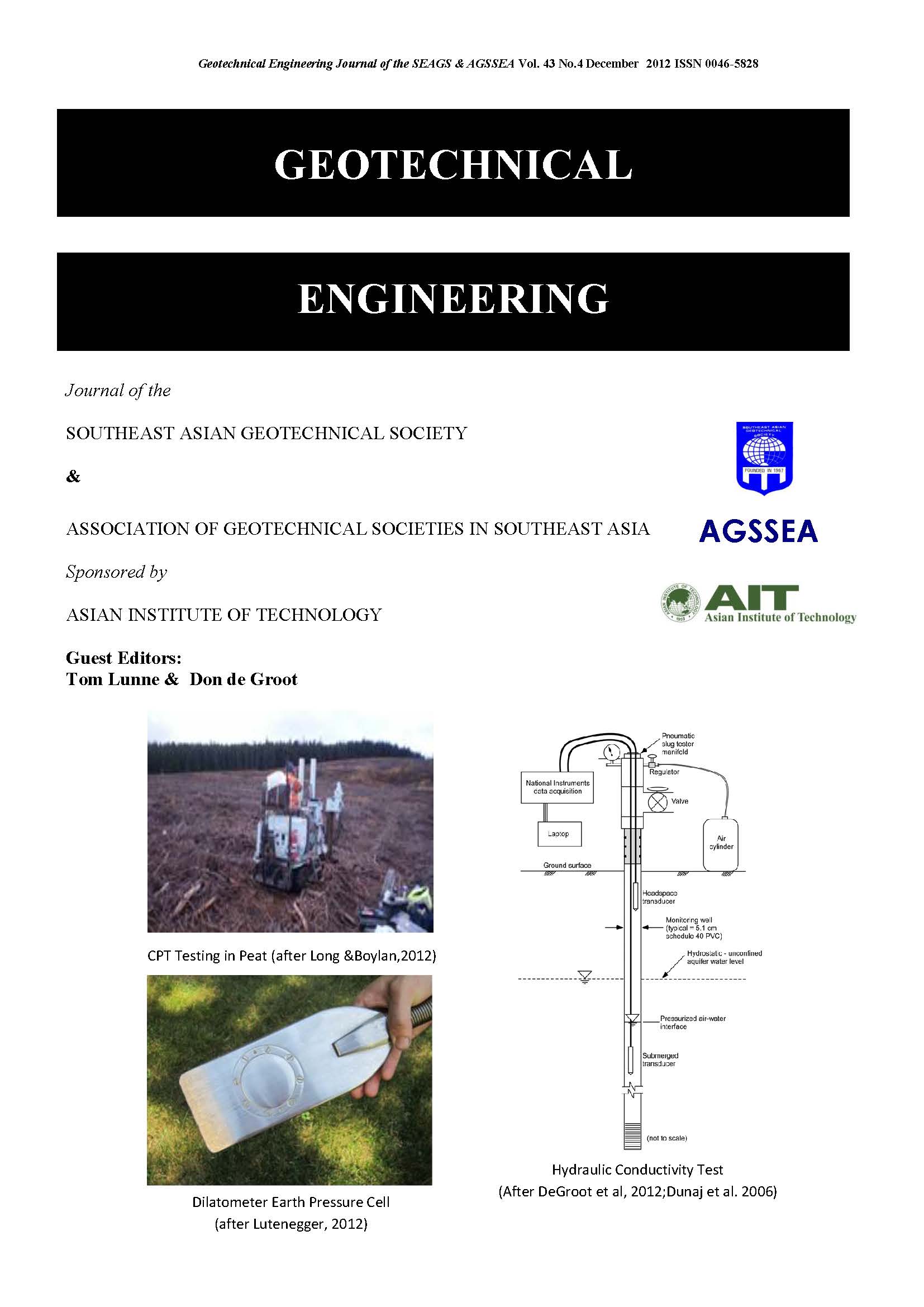In situ measurement of hydraulic conductivity of saturated soils
Main Article Content
Abstract
The hydraulic conductivity of saturated soilsvaries significantly from approximately 10-13 m/s for high plasticity clays to 1 m/s for clean, uniformly graded, coarse gravels. This very large range in possible values has resulted in the developed of numerous fieldmethods that cater to the soil type being tested and the anticipated hydraulic conductivity. The most common in situ method used in practice is the slug test as performed in open standpipe piezometers. Other methods include in situ dissipation tests and large scale pumping tests. This paper describes these various in situ measurement and analysis options and presents results obtained for a variety of soils including clays, silts, sands and gravels. The examples highlight the major influence of soil type on measured hydraulic conductivity values and also show the secondary influence of soil fabric and scale effects.
Article Details

This work is licensed under a Creative Commons Attribution-NonCommercial-NoDerivatives 4.0 International License.
Copyright © 2019 Association of Geotechnical Societies in Southeast Asia (AGSSEA) - Southeast Asian Geotechnical Society (SEAGS).


